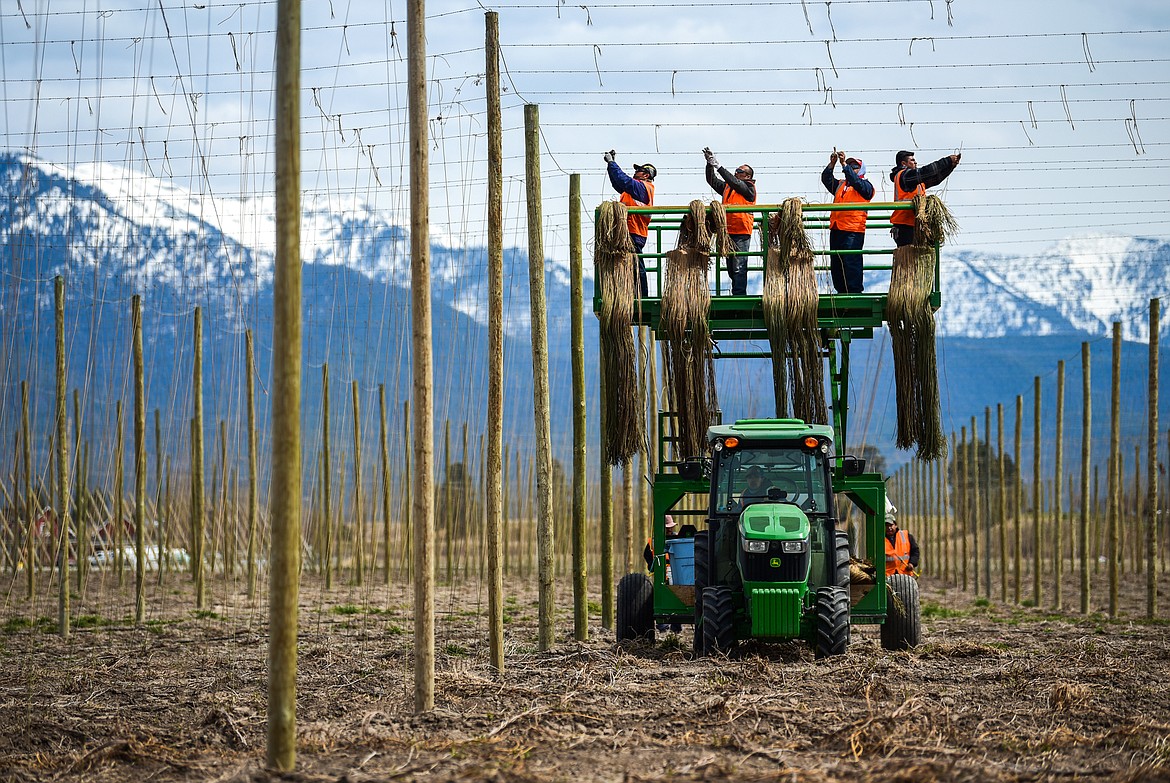Climate change could hurt beer production
Climate change may be very bad news for beer drinkers.
A new report in the journal Nature Communications shows that climate change is responsible for the decrease in quantity and quality of hops produced in Europe. And that trend is projected to continue as climate change is projected to continue.
And in Montana, where all elements of beer are produced, that news could be problematic not just for the state’s hops farmers, but also bad for the beer drinkers.
Montana ranks third in national beer consumption per capita, at an average of 41 gallons per year. That’s behind North Dakota, which averages 45.8 gallons and New Hampshire, which averages 43.9.
Increasing temperatures and longer, hotter, drier summers have hit hops farmers in Europe particularly hard, where growers note not only a decreased quantity, but a decrease in the alpha content of hops. Alpha content is a measurement that quantifies the bitterness of the hops, a desirable profile for many beer drinkers. Hops that have a high alpha content are often described as having a grapefruit or citrusy aroma.
The hop-growing zone that runs through central Europe also runs through most of the United States, including Montana.
Jake TeSelle operates a hops farm about six miles from Bozeman.
While commercial hops farming is relatively new to Montana – only being tracked for about the previous 15 years – TeSelle said an erratic climate can be tricky for any farmer.
In the journal article published in September, Nature Communications said it forecasts a decline in hop yield ranging from 4% to 18%, while the alpha content could plummet by as much as 31% in the same time period.
Hops farmers are already seeing evidence of a changing climate pattern, as most European hops growers said hops were maturing 20 days ahead of where they were just 30 years ago.
“The lowest hops yields were negatively affected by a lack of precipitation, while the lowest values of alpha content were caused by extremely high temperatures,” the study said.
That means that the trend toward both hotter and drier summers anywhere hops is grown could reduce not just the yield, or how many hops are produced, but it could also affect the quality of hops, reducing the alpha content – the very characteristic that makes hops “hoppy.”
Using the European areas as a study, scientists and researchers used modeling programs to forecast what hops production will look like into the future. And if climate change isn’t reversed, the trend is troubling for hops producers and consumers.
“Model projections for 2021 to 2050 suggested a decline in hops yields from 4.1% to 18.4%. A decrease of 20% to 30.8% was also projected for alpha content,” the study’s authors concluded.
TeSelle said that during hot, dry summers it could pinch Montana hops producers because the plant is water intensive, requiring as much as two gallons per day per plant. He’s concerned about the spike in high temperatures. Because hops is essentially a flower, it can survive heat with water, but temperatures of above 105 degrees are difficult because the water gets evaporated before getting to the plant.
“They can react pretty erratically to stress,” he said.
Montana is not a huge producer of hops, but it has been growing in recent years. According to the Hops Growers of America, the number of acres of hops harvested in Montana grew almost tenfold between 2017 and 2021 from 17 acres to more than 200. Idaho, Washington and Oregon produce the bulk of American-grown hops. The Pacific Northwest, which includes those three states, produces more than 60,000 acres of hops out of a total of 63,000 acres nationwide. As of 2021, Montana ranked sixth in hops production, behind Massachusetts and New York.


